 India’s obsession with gold is well known around the world. To most Western commentators, this obsession seems irrational, and Indian people seem like incurable gold bugs.
India’s obsession with gold is well known around the world. To most Western commentators, this obsession seems irrational, and Indian people seem like incurable gold bugs.
Ludwig von Mises Institute – GANESH RATHNAM: However, on closer examination, gold ownership in India is neither excessive nor irrational. In fact, when religious, cultural, and historical perspectives are considered, India’s appetite for gold seems rather matter of fact indeed. Nonetheless, it is not lost on any Indian worth his or her salt that gold is the asset that best protects wealth and freedom.
…India’s private gold ownership is difficult to determine accurately. However, several websites, such as Gold Eagle, estimate the total private gold holdings to be about 15,000 metric tons. Compared to that figure, the Indian government owns a negligible 360 metric tons of gold.
Given that total gold mined in history is about 160,000 metric tons, India’s stake then amounts to 9.6 percent of the world’s total gold stock. In contrast, India accounts for just over 17 percent of the world’s population. Therefore, India’s large gold ownership is just a function of its large population, and its per capita gold ownership is well below average.
However, there can be no doubting Indians’ desire to own this metal. Demand from India consumes some 20–25 percent of the world’s annual gold output. go to story
———————————————-
Opulence measured by gold, stock of grains, number of cows
excerpt from lecture on Srimad-Bhagavatam 1.9.2, Los Angeles, May 16, 1973
PRADYUMNA: [Reading text from Srimad-Bhagavatam 1.9.2:] “At that time all his brothers followed him on beautiful chariots drawn by first-class horses decorated with gold ornaments. With them were Vyasa and rishis like Dhaumya, the learned priest of the Pandavas, and others.”
PRABHUPADA: So one very important word is here: sadashvaih svarna-bhushitaih. Formerly the horses were used in military division. Horses, chariot, elephants and then infantry. So not one or two, but one division of military phalanx required sixty thousand horses. Akshauhini. So many horses, so many elephants, so many chariots, and so many infantry soldiers—that will compose one division of soldiers. “So many” means I exactly remember now, sixty thousand horses. So all the horses, when they were required for procession or for going to the fight, were well-decorated with golden ornaments, svarna-bhushitaih. So just imagine the, all the saddles of the horse, if they are golden ornamented, how many ounces you will require to decorate the horse. And what is the price of gold now?
DANAVIR: One hundred and twenty-eight dollars an ounce.
PRABHUPADA: Just see, at least fifty ounces will be required to decorate one horse. And one ounce is $120. So what is the price of fifty ounces?
DEVOTEES: Five thousand dollars.
PRABHUPADA: Such sixty-thousand horses, how much it comes? [laughter] Where is that gold? They are very much proud, advancement of material civilization, but instead of gold, we find plastic. [laughter] And the nonsense, they are very much proud of their wealth. Just see. Even they cannot decorate their wives. And women, they require also ornament. It is psychology. Manu-samhita, it has been recommended that “If you want to keep satisfied your wife, then you must give her good food, good sari and good ornament.” This is the system. Therefore during marriage time, the girl is given by the father according to his means, as many saris, nice saris, beautiful costly saris, and as much as possible, golden ornaments. And those who are very rich, they, still in India, they give jewelries—means diamonds, pearls, sapphire, according to means. Those who are richer class, they don’t touch gold. They must give jewelry. This is the system.
So this is the opulence. So much gold. When the Kurukshetra battle was finished, so the treasury was also finished. The treasury of the Pandavas, that was also finished. Because war means expenditure. So many hundred thousands of pounds and dollars required daily to finance the running on of the war. So Yudhishthira Maharaja wanted to perform sacrifice. So sacrifice means he requires money, so much grains, so many ornaments, so much gold and ghee, everything required. To perform sacrifice is not ordinary thing. Millions and millions of dollars required. In the Kali-yuga, because people cannot collect such costly things… Suppose ghee. Tons of ghee was being offered to the fire. Where is that tons of ghee? Not available. Then all utensils made of gold. The altar made of gold. Where is that gold? This was five thousand years ago, the Indian history, or this world history… Now it is called India, but this whole world is Bharata-varsha.
So Yudhishthira Maharaja asked his brother Dhanañjaya, Arjuna, “So bring some money from somewhere. Otherwise how we can perform the sacrifices? We have finished all our treasury.” So Arjuna was little perplexed. The elder brother was king, and the younger brothers, they were commanders. So Krishna saw that His friend was little perturbed. So He immediately gave information. This is God, sarva-jña. He knows where to find out. He gave him information that formerly one king, by the grace of Lord Shiva, got information of a big gold mine, or gold mine mountain. So that king used to manufacture so many things of gold. Especially in sacrifice he used to give immense dishes made of gold to the brahmanas. So at that time, the brahmanas were also not very greedy. So the king, during the sacrifice, gave them unlimited number of dishes made of gold. So they accepted it, but when they came out of the sacrificial arena, they thought, “Who is going to carry so much load? Throw it.” Just see. This is opulence.
As nowadays it is our system that the plate on which you eat, that should be thrown away, formerly, people used to eat on golden plate (at least, the royal family), and after eating they used to throw away. Not for the second use. Just like India still, it is observed, earthen plate used, as here in your country, paper plate, in India, earthen plate-once used, then it is thrown away. It cannot be used second time. Therefore in rigid Hindu family, they don’t use these china clay plates. They don’t use. Because it is made of earth. So when it is earthen pot, as soon as you eat, it becomes contaminated. It must be thrown away. You cannot use for the second time. That was the tradition. So this system was formerly even for golden plates. Once used, then it cannot be used second time. It is thrown away. And “thrown away” means some poor man will collect. So there was no question of poverty. The rich men, they eat once and throw away. Their servants or other poor man… Just like these brahmanas, they threw away all these golden plates. Brahmanas did not require golden plates, but they were given in charity: “Brahmanas, you take.” They accepted, but they thought, “It is a load. Why should I carry? Throw it.”
So there were heaps of golden plates lying near Himalayan mountain, and Arjuna was given information by Krishna that “You go there and collect those golden plates. Then your purpose will be served.” So Arjuna went there and collected and brought it to his brother, Maharaja Yudhishthira, for converting them into money for spending in the sacrifice. So this was the system. Therefore Arjuna’s another name is Dhanañjaya. Dhanañjaya means “one who can conquer over riches.” His brother was in need of money, and he brought money. Therefore, from that day, his name was Dhanañjaya, “one who can conquer over riches.”
So actually, human opulence means not these tin cars. Once it is dashed with another car, it is finished, no value. Human opulence means the society must have enough gold, enough jewelry, enough silk, enough grains, enough milk, enough vegetables, like that. That is opulent. That is opulence. Formerly a person was considered rich by two things: dhanyena dhanavan. How much grain stock he has got at his home. A big, big barn, filled with grains. Still in India, if I am going to give my daughter to some family, to see the family’s opulence, I go to see the house, and if I see there are many, many barns’ stock of grains and many cows, then it is very good. It is opulent. Dhanyena dhanavan, gavyam dhanavan. A man is considered to be rich when he has got enough quantity of grains, enough quantity of, I mean to say, number, enough number of cows. Just like Maharaja, Nanda Maharaja, the foster father of Krishna. He was keeping 900,000 cows. And He was rich man. He was Maharaja, king. But see the behavior. His beloved son, Krishna and Balarama, he has entrusted to take care of the calves or cows: “Go in the forest.” He is well dressed with ornament, and nice dress, everything. All the cowherds boys, they are very rich. They have got enough grains and enough milk. Naturally they will be rich. But not that the cows and the calves will be taken care of by some hired servant. No. They would take care themselves.


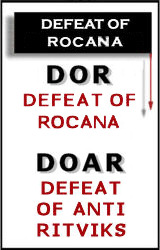
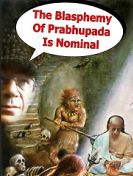
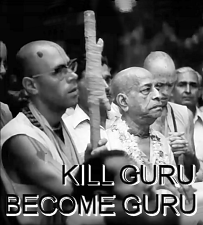
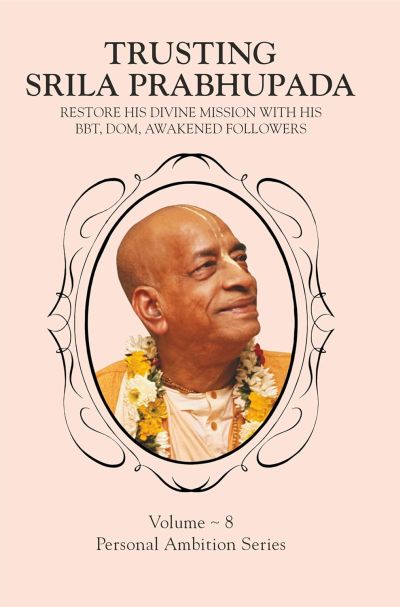
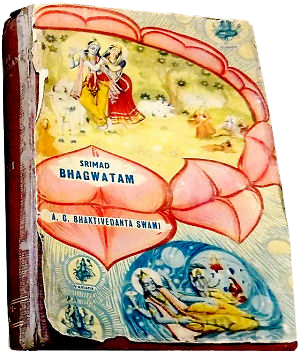
Speak Your Mind